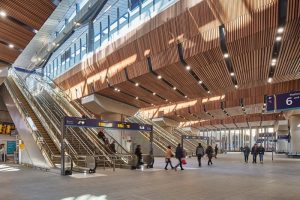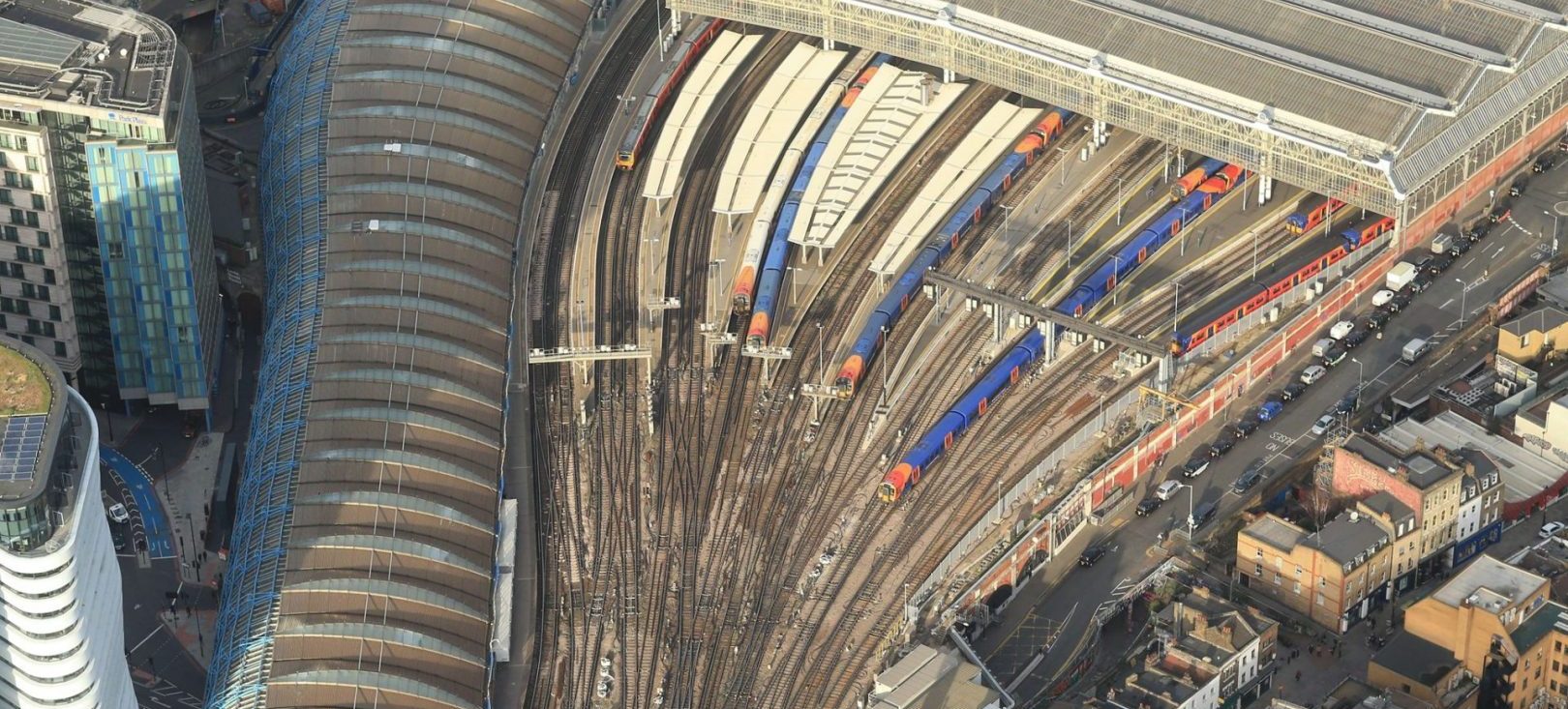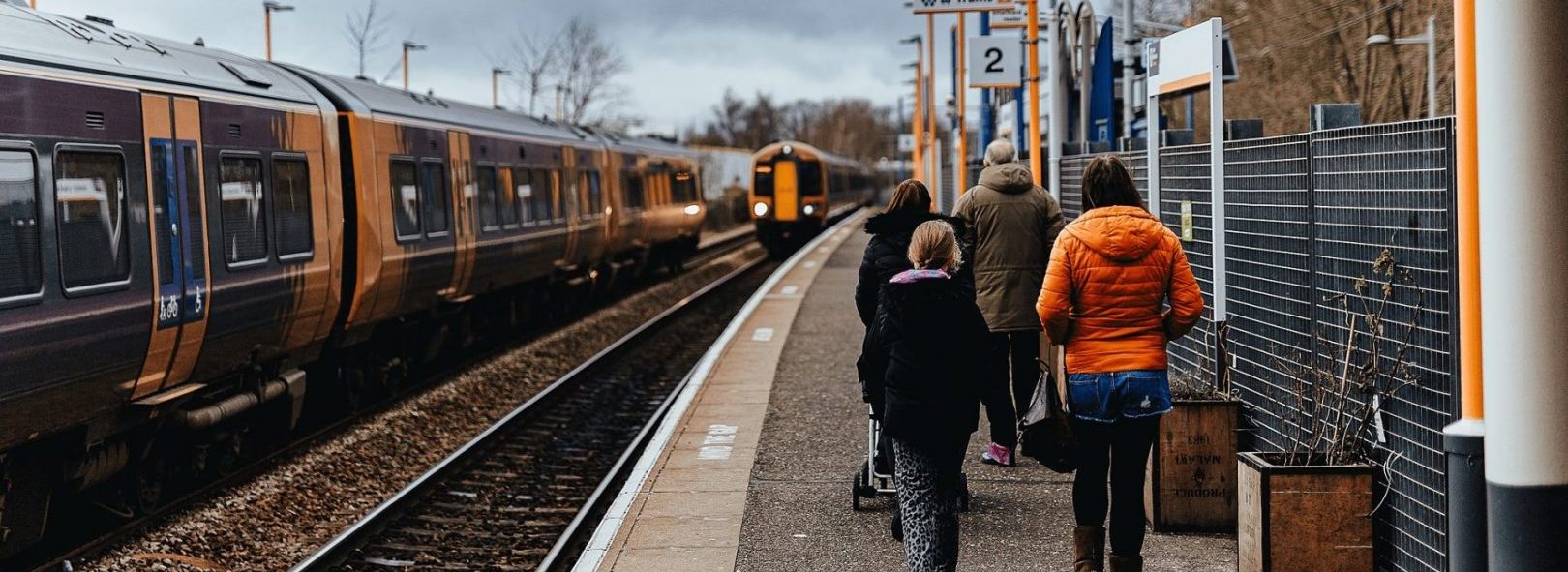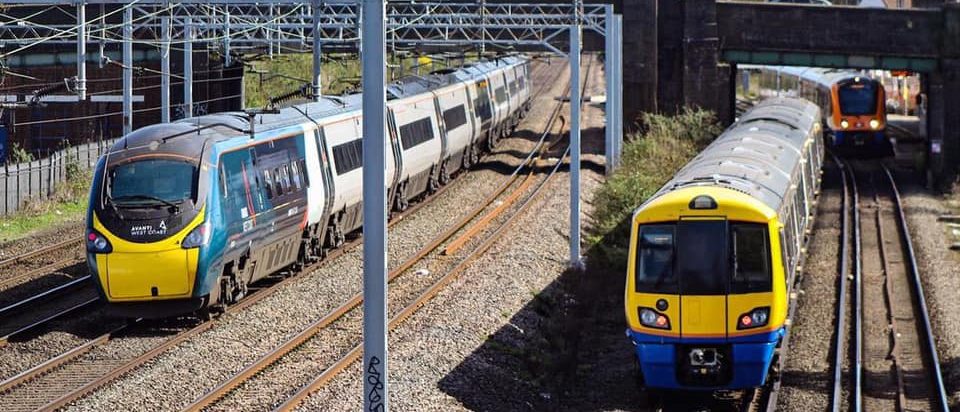The United Kingdom has published The Williams-Shapps Plan for Rail which has the role of transforming the whole railway sector, with everything that it encompasses, from new regulations and measures to new methods of providing passenger services, new measures to strengthen and develop rail freight transport and increase the share of research and innovation in the railway. Perhaps it has been said several times that strategies and plans have been prepared to transform the railway system, but now, the comprehensive plan for changing the way in which the system works is one that will carry out a thorough overhaul.
article by Pamela Luica
In recent years, the United Kingdom has come up with more and more solutions for the modernisation and development of the transport system, and the railway is a priority.
In the spring of this year, the Secretary of State for Transport Grant Shapps presented to Parliament a strategy that seems to make the greatest change in rail transport in the last 25 years; this change is accompanied by the creation of the Great British Railways public institution that will integrate the rail system and will offer passengers more modern and reliable services, while they will be able to use the services in a much simpler manner and through a competitive and easy charging mechanism.
From the system integration and the franchise replacement to the acceleration of innovation and strengthening of the status of employees in this sector, the strategy aims at revolutionising the entire transport system. On average, over 21,000 transport services per day with 75 types of passenger services are offered by the UK railway. In the last three decades, the Government has invested over GBP 150 billion (EUR 175 billion) in the rail which currently accounts for over 50% of the total public transport spending.
The poor organisation of the train timetable review in 2018 and the Network Rail infrastructure manager’s failure which led to a collapse in the timetable, the great challenges faced by the freight and passenger transport during the pandemic, but also the failure of the East Coast franchise and the problems arising following the event, constant delays (on average one in three trains was late in 2019-2020) that generated costs, all have led the authorities to focus on a new model of operation of the system that would revolutionise the way in which the mobility of passengers and freight is ensured.
The Williams Rail Review, completed in 2020 and published in May 2021, identified six major problems currently faced by the British railway. These include poor focus on customers, lack of opportunities to meet community demands and lack of a clear strategy, system fragmentation, low productivity, and great effort to innovate and adapt. All these elements are addressed, and solutions are provided under ten pillars.
“This plan is the path forward, reforming our railways to ensure they work for everyone in this country,” Keith Williams, Chair of the Williams Review said.
For the United Kingdom, rail transport is essential with a huge contribution in the economy, in the industry, it ensures the proper functioning of cities and regions and contributes to reducing the environmental impact, this being one of the most important policies of the Kingdom to achieve its zero-carbon objective.
As a result of the analyses of all issues, challenges, and manner of responding effectively and sustainably, the government has come up with a new strategy to revolutionise how the system currently operates. The whole sector needs a fundamental change, and now is the time because the pandemic has highlighted the issues of the sector that need to be rapidly addressed, especially since the sector works in a manner that is detrimental to the interests of passengers, of customers who have their freight carried and implicitly of tax payers.
“Years of fragmentation, confusion and over-complication have seen that vision fade and passengers failed. It’s now time to kickstart reforms that give the railways solid and stable foundations for the future, unleashing the competitive, innovative and expert abilities of the private sector, and ensuring passengers come first,” Grant Shapps Transport Secretary said in May when unveiled the new rail plan.
In short, Great British Railways (GBR) will be the infrastructure manager and will implement projects, set timetables and the charging system, and receive the fare revenue and more. With the new plan, Great British Railways will basically manage the entire railway system with a focus on passenger transport and to provide sustainable, more accessible and robust mobility.
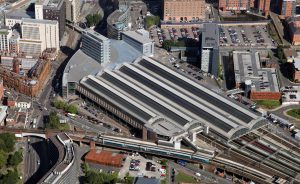 Also, the franchise method will be replaced by a new formula that will involve incentives for operators, and in turn they will have to provide accessible, qualitative, punctual services and attract more passengers to public transport services.
Also, the franchise method will be replaced by a new formula that will involve incentives for operators, and in turn they will have to provide accessible, qualitative, punctual services and attract more passengers to public transport services.
“I am a great believer in rail, but for too long passengers have not had the level of service they deserve. By creating Great British Railways and investing in the future of the network, this government will deliver a rail system the country can be proud of,” Prime Minister Boris Johnson said.
The United Kingdom is focusing not only on policies and measures, but also on investments aiming at modernising and strengthening its infrastructure and at connecting more and more regions, offering services that attract maximum traffic to the railway. By reviewing the expenses at the end of 2020, the government committed to allocate over GBP 40 billion (EUR 467.45 billion) for the implementation of projects for a four-year period, including GBP 22.8 billion (EUR 26.65 billion) for the HS2 high-speed rail project for which the construction works were launched in September and for which contracts are moving forward, and GBP 17.5 billion (EUR 20.45 billion) for the renewal, modernisation and optimisation projects of the existing infrastructure. This time, investments will be prioritised and targeted to regions that have not benefited from such attention and that create an imbalance in network uniformity. So far, the largest investments have been allocated to South East England projects where rail traffic is intense, while London and the South East will still benefit from funding especially for CrossRail projects (Elizabeth Line), for upgrading of Thameslink and for the purchase of trains.
Integration means one body
To achieve the integration of the system, the White Paper mentions 62 commitments whose implementation will be guided by a team addressing both the public side of the system and the private side, creating opportunities through Great British Railways leadership.
The creation of GBR will envisage a balance relationship between the needs of an efficient national system, concerning in particular freight transport services, and community requirements and demands. Thus, important decisions will be made at central level, and what is related to the operational side will be addressed by five regional divisions organised in accordance with the regions established by the Putting Passengers First programme of Network Rail which highlights the mobility of freight and passengers. The divisions will be responsible for the system, with budgets and delivery at local level, deciding for investment priorities and working with operators and suppliers to operate an integrated network.
Since GBR will facilitate much closer cooperation with local and regional administrations, partnerships will be formed because they will enable effective and rapid response to requests in those areas. It is important that, for the first time, agreements will include the entire offer for passengers and long-term strategies for the development of the railways in local areas.
By unifying costs and revenues, Great British Railways will be able to have a broad perspective of the situation leading to the adoption of decisions that are much faster and efficient, which will allow the functioning of the rail as a public service, but with a consolidated business model. At the same time, the railway will become more transparent and visible for all parties such as government, investors or tax payers.
Great British Railways’ objectives will include operating in the interest of passengers, customers of freight services and local communities, opening new markets and increasing the number of passengers, but also the responsibility of financial sustainability by reducing waste and inefficiency and developing new revenue streams for the benefit of customers.
The new body, GBR, will take over the responsibilities and employees in sector organisations, including the functions of Rail Delivery Group (RDG) that brings together all freight and passenger operators, Network Rail and HS2. DRG offers many cross-industry functions such as National Rail Enquiries, ticketing, and retail systems, but also cross-sector coordination. Under these circumstances, the strategy mentions the continuation of expertise and systems in the new structure, and GBR will take responsibility from RDG for the functions it needs to form an integrated guidance across the railway network, which will not affect the ability of operators and other RDG members to maintain independence.
Also, HS2 Ltd and East West Rail Ltd will retain their current roles and will work closely with Great British Railways as it takes over the responsibilities for integration from the Department for Transport (DfT) and Network Rail; regulated infrastructure managers will continue their own activity, but they will work closely with GBR to ensure network integration.
The responsibility of GBR will also cover the essential functions of the Department for Transport, as well as the acquisition of passenger services. Network Rail will also be absorbed by the new institution that will work with all parties involved in the rail sector to form a customer-focused framework (passengers and freight transport customers).
The body will continue to own the infrastructure in Scotland and Wales, and the government will attempt to identify options with Transport Scotland to allow the railway in Scotland to benefit from the reforms established and implemented across the British rail system. An agreement between GBR and Transport for Wales will also be concluded to optimise the services and the system for customers, providing optimal connections on a connected network between Wales, the West Midlands and the West of England. But this agreement will have to be negotiated between the UK and Welsh governments building on existing Wales and Borders agreements.
In London and South East, a new partnership will be established to support not only the development of the railway, but also of the economy, housing and the environment, in close connection with what the transport system means and its ability to ensure integrated and qualitative mobility.
This will bring together GBR, TfL and local authorities and the business environment to form a system that brings added value to the whole country. However, the existing administrations and authorities across the country will continue their actions for which they will be accountable.
Since all railway stations are currently owned by Network Rail, but all 20 large stations are managed by operators, the system is fragmented and cannot be managed effectively for the long term. As a result, local management teams will be set up in the five regional divisions to manage stations, land, and assets to be able to make firm and integrated decisions, contributing to better passenger services, access for commercial services, improved cycling transport services, fast interconnections for sustainable travel in rural areas.
As regards traffic, the new organisation will develop the train timetable and will establish the fare system and take the risk of revenue, though it will not operate trains directly but by contracts with private companies that will provide services on behalf of GBR under Passenger Service Contracts.
The body will also be responsible for attracting funding for infrastructure, rolling stock and real estate and will manage network cost and revenue decisions, while budgets will be distributed at regional and local level. This will mean greater commercial freedom and autonomy for long-distance passenger operators. The Office of Rail and Road (ORR) will also undergo complete transformation to optimise the degree of transparency and efficiency, and to this end legislation will be developed to revise its activities to focus on monitoring, reporting and improvement across the sector. This way, GBR will benefit from a base that will become an essential part of the system.
Long-term strategy is a must
Because of the funding mechanism and dependence on public funding, for which there were many competing claims, there was no long-term financial certainty and the various problems, disputes and pressures led to fragmentation that prevented long-term priorities.
Privatisation has provided the opportunity for stable medium-term public funding, with successive five-year control period settlements by which the government allocates funding to Network Rail. As a result of the new policy, the government will maintain CP (CP6, from 2019 to 2024) and will provide funding after the current CP has ended, after 2024. Thus, the government will ask GBR to develop business plans over a five-year planning horizon in the future too, to provide funding for services and infrastructure, but also to create a hypothesis of adoption of financing decisions.
In addition, the private sector will be more involved in supporting state funding.
While there is currently no organisation or institution that has the capability and responsibility to include financial, technical, and operational aspects to oversee the design, investment, and management of the major changes to track infrastructure and on-train systems (such as digital signalling), a strategy will be set out for the next three decades setting clear priorities, being the responsibility of GBR.
The strategy aims to be one that solves the current problems addressing all aspects, including innovation, and by launching projects and transformation measures, time and costs will be saved while also enabling the industry to develop the whole system.
At present, the Secretary of State has begun creating a Whole Industry Strategic Plan for the next 30 years, which could be completed next year, and which involves all decision-makers and industry.
TACs method
As the system also includes the track access, the way in which it is currently operating will be changed to create a more simplified and responsible system, eliminating the fragmented situation with inefficient use of the network which is currently characterising this segment.
The new legislation will give GBR powers and duties to plan the use of the network and to be accountable for how the whole of the network is used, balancing priorities, and maximising the overall public benefit.
It is to be understood that the government will engage in consultations with all partners and operators for the development and implementation of new rules supported by legislation and based on fair access. Existing access contracts will be honoured, and private operators will continue to have clear legal rights that allow them to respond to their customers as part of a rules-based regime. To provide a quick and smooth transition, key contracts and functions will be initially transferred from Network Rail to Great British Railways. Then there will be a new generation of contracts and processes that will be developed for private operators to create a complex legislative system and provide clear legal rights. The ORR will come into play here and will take on an appeals role to ensure that policies and measures are applied in a transparent and fair manner by GBR.
Because the structure currently allows fees paid from one body to another, in a system of the sector, in the future, it will be transformed and will make funding relationships much simpler and easy to understand.
No more franchising
Around 50% of passenger trains operating in North of England were late in 2019-2020.
In the United Kingdom, for the past 25 years, services on the railways have been run by franchised operators, a model which saw private companies/operators engaged in competitions for the right to operate services for 7 years (on average) and to manage stations and set fares in a system set out by DfT or devolved authorities to whom fees were paid or subsidies were received; the financial risks of changes in revenue and operating costs were borne by operators.
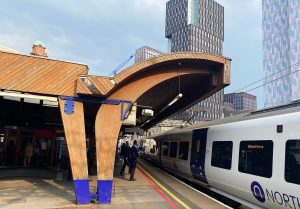 Although franchising secured various benefits for passengers and the wider economy, in recent years it has proved unable to meet the challenges and demands and there have been situations where it has not been able to meet passenger satisfaction in particular in enabling changes such as modernising fares and ticketing system. An unprecedented situation was faced during the pandemic, more precisely in March 2020, when franchised train operators saw themselves in a position where they would not have been able to keep going because of the almost complete drop-off in passenger demand. Under these circumstances, the government had a legal responsibility to keep franchised services in operation and introduced emergency measures to keep trains running, assuming the cost and revenue across all 14 national franchises.
Although franchising secured various benefits for passengers and the wider economy, in recent years it has proved unable to meet the challenges and demands and there have been situations where it has not been able to meet passenger satisfaction in particular in enabling changes such as modernising fares and ticketing system. An unprecedented situation was faced during the pandemic, more precisely in March 2020, when franchised train operators saw themselves in a position where they would not have been able to keep going because of the almost complete drop-off in passenger demand. Under these circumstances, the government had a legal responsibility to keep franchised services in operation and introduced emergency measures to keep trains running, assuming the cost and revenue across all 14 national franchises.
Following the analyses of the situations, it was concluded that operators should have another role to restore a focus on the provision of high-quality services, encouraging passengers to choose the train as a means of mobility. As a result, a new concept of public-private cooperation will be introduced by launching a new commercial model, the Passenger Service Contracts, which will get trains running on time, will enable frequent services and will provide capability to respond to transport demand. This reform will intensify the competitiveness of the private rail sector and will bring customers the services they need.
The example of operation through the new commercial system is the one by which TfL Overground is operating, using a concession model to contract with private companies to operate trains. This model is more efficient than franchising because it allows operators to be held to account for running trains on time, delivering passenger satisfaction and controlling costs. The approach has led the authorities to build a new model instead of franchising and to introduce the Passenger Service Contracts.
The way it will work
GBR will specify the timetables, branding, most fares and other aspects of the services delivered to passengers and will agree a fee with the competitively procured passenger service operator. The system will operate like this: in most contracts, fare revenue will go to Great British Railways, with operators delivering to the specification and managing their costs in doing so. They will take cost risks but will have to balance this with the quality of services in order to be effective while also satisfying the needs of passengers.
In the case of franchises, each operator designed their own timetable, set fares and took revenue on their part of the network. Given that competitions (to win the operating right) were based on complex and uncertain revenue forecasts and operators took both cost and revenue risks, the new operating system with Passenger Service Contracts will eliminate this method.
The National Rail Contracts will be able to establish emergency agreements and act as stepping stones in the transition to the new type of contracts. These will include incentives to drive revenue growth and the flexibility to switch on further revenue growth measures.
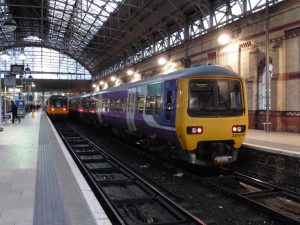 Passenger Service Contracts will require operators to meet demanding standards for key passenger priorities – from punctuality to reliability and satisfaction, vandalism repair, revenue protection and cleanliness. Also, a new toolkit of measures will underpin these contracts in such a way that in the future, passenger service operators will benefit when trains are clean and comfortable and passenger satisfaction increases. Failing that, operators will not be rewarded when trains are in poor condition, when they are too frequently late or cancelled or when they run with fewer carriages than planned.
Passenger Service Contracts will require operators to meet demanding standards for key passenger priorities – from punctuality to reliability and satisfaction, vandalism repair, revenue protection and cleanliness. Also, a new toolkit of measures will underpin these contracts in such a way that in the future, passenger service operators will benefit when trains are clean and comfortable and passenger satisfaction increases. Failing that, operators will not be rewarded when trains are in poor condition, when they are too frequently late or cancelled or when they run with fewer carriages than planned.
Another motivation for operators will consist of their ability to cooperate in order to optimise performance across the network which will be assessed by GBR through customer perception, inspection regimes and mystery shopper. Operator performance monitoring will be provided by Transport Focus that will promote passengers’ interests regarding network access, will identify failures and problems and will work with the Secretary of State to ensure the implementation of remedial actions.
Even if tough measures and targets will be built into each contract, some targets will be adaptable during a contract, so that operators are able to address the changing passenger demands, government priorities and economic conditions. For example, punctuality and performance requirements could become stricter, requiring operators to invest in the right technology and new options to achieve medium-term targets and deliver the improvements that passengers need.
And here is where regional divisions (of GBR) and their commercial partners will come into play, joining their forces with a view to increasing the number of passengers. In the case of contracts, revenue incentives will be introduced to increase the number of passengers, to determine people to choose rail transport over other modes of transport, to introduce innovative solutions that deliver real benefits.
As part of a functional and integrated system, Great British Railways will draw up contracts and the service plans in line with its priorities to grow the railways and improve efficiency and it will consult the market, but the body will have the final say, bearing in mind the interests of the whole network and taking into account the new rules-based access. But the body will not design schemes for services that cannot be supported by the infrastructure or that are based on ineffective timetables, as happened repeatedly under franchising. It is intended that these measures will completely eliminate the failures of competing specifications that promise more and more trains, but in reality, only lead to massive network delays, stirring passenger dissatisfaction. Germany’s example is introduced in the system reform. Thus, where choices are required about how to allocate scarce capacity between operators, GBR will make decisions in accordance with the rules-based access system, and in some areas, such as cities or regions, local authorities will be directly involved in shaping and drawing up contracts through partnerships with regional divisions.
Each contract will require and incentivise operators to cooperate with GBR and other partners (or suppliers), including other transport services, to provide passengers with faster and more convenient connections between long-distance and local services; the operator will also be required to support the integration objectives for bus travel or cycling, set out in the government’s recent strategies.
Compared to the current system, under the Passenger Service Contracts services will be mixed to deliver to both commuters and long-distance passengers and will also include mixed incentives to reflect the different risks and commercial opportunities available in the geographic area. The duration of the contracts will not be the same, varying depending on other factors. For example, on some sections/lines of the network, longer contracts than those used under franchising may be adopted to support major investment programmes or the delivery of significant changes for passengers. Long-term contracts will be accompanied and supported by more vigorous and tough targets and provisions to require high performance. The good news for operators is that they will have greater commercial freedom on some parts of the network, with revenue sharing arrangements where appropriate. The contracts will become flexible and will provide operators with the opportunity to act more commercially on certain service segments when this is the most value for money option and it is financially sustainable for the operator to take on these responsibilities. Operators on those long routes will usually be able to make more decisions, including setting their own fares and taking more cost risk, although affordable “turn up and go” fares and seasons will be protected, as now.
In addition, there will also be the potential for new open access services to be explored where spare capacity exists to make best and efficient use of the network and develop and increase new markets.
The options are designed to get the most from the private sector’s involvement by driving efficiency and providing high quality services at an affordable price to attract more and more passengers to the railway.
Since 2012, around two-thirds of contracts have been awarded without a competition.
Whereas since 2012 approximately two-thirds of the contracts have been awarded without a competition, this time, the reform of the rail system will subject all Passenger Service Contracts to competition which will be greater and tougher than current franchises. Thus, the new contracts will reduce barriers to entry for new bidders and will revive the competitiveness of the rail market.
But if the operators fail to fulfil their duties, the contract will be terminated and the government is prepared to intervene and take control by retaining its operator of last resort function to enable services to continue seamlessly, as it did with Northern Rail in 2020, when because of major interruptions and especially because of the major issues in May 2018 when new timetables were introduced, punctuality and reliability faced serious problems that lead to chaos among passengers who lost their confidence in these services provided by the operator. In January 2020, the Secretary of State announced that Northern franchise would be eliminated from the private sector, Arriva Rail North, owned by Deutsche Bahn, and brought under government control. The “nationalisation” of the company had been a long time coming, as the services had suffered from a lack of implementation of promised infrastructure improvements, delayed rolling stock and the fallout from the May 2018 timetable changes.
According to Parliament, this move comes at a time when the rail franchising system is under considerable strain and is likely to end with the implementation of the rail reform White Paper, the outcome of the Williams Rail Review.
Based on this experience, the government will adapt this function as the sector is reformed so that operators can be held to account more effectively to the objectives in their contracts and so that interventions can be made in the interests of passengers and tax payers.
All these variants and measures and the Passenger Service Contracts model should contribute to increasing the interest and to opening up the market to new partners, including those who have the capability and ability to modernise the railways through the technological and innovative expertise they have, increasing the competition between the bidders.
The passenger – at the centre of the plan
The whole vision is focused on passengers, as they have lost their confidence in services, where the rail sector is not trusted to deliver services in the public interest: public trust reached a low in 2019, when only 20% of passengers trusted train travel. By comparison with trust in banks or energy suppliers, the percentage of trust in passenger rail services is extremely low. Also, in terms of passenger satisfaction, the British railways do not have a positive position: in 2018, satisfaction reached the lowest level in the last ten years due to delays, cancellations or poor customer service.
Theoretically, the issue is simple: the passengers pay for services and they want reliable, punctual services that represent good value for money, they expect clear and proactive information and fair and simple transparent pricing. According to the figures mentioned above, the current situation is the opposite of their expectations. The British rail revolution wishes to put the passenger first and to provide him with modern, convenient, and affordable journeys.
One of the key elements in increasing the attractiveness of the railway is the method of payment for the tickets, for which the government wants a modern, easy-to-access and flexible system that replaces the current system that is mostly working based on a complex and complicated paper ticket selling system, which results in costs of over GBP 500 million (EUR 581.6 million) per year.
The ticketing system that is in place in London will be taken as example here. It is the Pay As You Go contactless ticketing operable in the urban and commuter network. The roll-out of Pay As You Go where passengers can quickly access a card or phone in a few seconds to pay for their tickets has generated an increase in the number of passengers because it is fast and attractive and it resulted in cost savings at the same time.
As a result, positions and measures will be adopted for the implementation of a national ticketing system to provide all the premises for fast and flexible booking, with valuable information for the passenger, Great British Railways being engaged in the allocation of investments.
Within the network, GBR will invest in online and mobile ticketing, especially for season tickets and regional or long-distance journeys, which will make it far easier and faster for passengers to acquire their ticket for the desired route. Digital ticketing on phones will support passengers and will provide multiple possibilities in choosing travel variants.
Another important component on this segment is creating a single website or app that will provide the passenger with all the information he needs in one place, offering real-time data on delays or routes, as well as simple and fast payment options. GBR estimates that over time the application or website will also expand to include compensation claims, the ability to book services such as Passenger Assist, wheelchair or bike space catering, parking, taxi, or bus travel to and from the station. In addition, the application could also include external services, such as hotels and car or bike hire.
Thus, this system could become a single portal or app for all public transport services, coming entirely in support of the passenger.
The services offered in large and small network stations will be upgraded and integrated services will be provided, which will provide tourists with a better opportunity to travel without the uncertainty and confusion of a complicated system in order to book a journey.
In addition to the complete modernisation of the ticketing system, Great British Railways will simplify the current complicated system of fares and tickets and will set the fares under a clear framework agreed with the ministers involved. In the case of long-distance services, where operators have more commercial freedom and control over the setting of fares, a greater range of book-ahead tickets will be provided, contributing to eliminating the possibility that passengers encounter suddenly increased prices at different times of day, for example.
Moreover, much simpler and fast compensation methods are also proposed by introducing a simpler claiming process to help passengers claim their rights. Along with these methods to simplify how the passenger gets tickets and the pricing methods, the Williams-Shapps Plan for Rail includes further protection of affordable fares and season ticket caps, services during peak hours, the introduction of tickets/flexible season tickets, the provision of clear information before, during and after the journey, and travels by rail, tram and bicycle that will become totally integrated.
With the help of private sector
The private sector will be heavily involved in the development of the British railways, a country that focused and recorded its success based on partnerships between public institutions and the private sector, which in 2016-2017 invested GBP 4 billion (EUR 4.65 Billion) in the rail system.
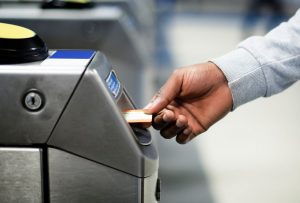 Thus, rail freight transport, which brings massive benefits both to the economy and the environment, will be supported by a new customer-oriented approach, track access rights and important guarantees to ensure that operators receive the right network access. A new track access regimen will be established that will not be able to change at the initiative of Great British Railways which will have the legal duty to promote rail freight transport to ensure economic, environmental and social benefits. The government will issue guidelines on its priorities for this sector within each funding settlement, providing the necessary security of private partners. All government will work with the market to consider modernising and improving the network that increases capacity for freight services and contributes to increasing this segment of services. The projects mentioned here include the long-delayed remodelling of the Ely North Junction to allow journeys across East Anglia and from the Port of Felixstowe to the Midlands and northern England. The port is an important transport hub as half of the freight traffic to North and Midlands is carried out by rail. The analysis and methods will also be explored to enable future Strategic Rail Freight Interchanges to be located more appropriately at country level. Great British Railways will be present here too, because it will set up a department that will act as a single point of contact for operators and customers, contributing to the adoption of strategic decisions, including by incorporating the freight sector into the strategy for the next three decades. The government will establish a growth target for rail freight, but this should not become a ceiling; these changes will strengthen the place of rail freight on the national freight network.
Thus, rail freight transport, which brings massive benefits both to the economy and the environment, will be supported by a new customer-oriented approach, track access rights and important guarantees to ensure that operators receive the right network access. A new track access regimen will be established that will not be able to change at the initiative of Great British Railways which will have the legal duty to promote rail freight transport to ensure economic, environmental and social benefits. The government will issue guidelines on its priorities for this sector within each funding settlement, providing the necessary security of private partners. All government will work with the market to consider modernising and improving the network that increases capacity for freight services and contributes to increasing this segment of services. The projects mentioned here include the long-delayed remodelling of the Ely North Junction to allow journeys across East Anglia and from the Port of Felixstowe to the Midlands and northern England. The port is an important transport hub as half of the freight traffic to North and Midlands is carried out by rail. The analysis and methods will also be explored to enable future Strategic Rail Freight Interchanges to be located more appropriately at country level. Great British Railways will be present here too, because it will set up a department that will act as a single point of contact for operators and customers, contributing to the adoption of strategic decisions, including by incorporating the freight sector into the strategy for the next three decades. The government will establish a growth target for rail freight, but this should not become a ceiling; these changes will strengthen the place of rail freight on the national freight network.
As far as the freight is concerned, Passenger Service Contracts are introduced, which will include incentives for collaboration and innovation, encouraging operators to cooperate more intensely with partners, including with other operators and suppliers to create a sound network with high-performance and fast services.
In terms of integrating the planning of the rolling stock fleet with the improvement of the infrastructure, this will be important to improve the passenger experience, the environmental sustainability and the financial efficiency.
For the private sector, the Plan published by the government also includes the introduction of modern contracts for increasing competitiveness and reducing costs, and also for attracting private investment in the creation and implementation of new technologies. Meanwhile, new locally led innovation schemes will unlock smarter working and will support growth, while local engagement will better support small and medium-sized companies and start-ups.
Decarbonisation
Since the United Kingdom has announced its ambition to decarbonise the railway time and time again, the Williams-Shapps Plan for Rail mentions electrification, hydrogen, and batteries as key elements to achieve the zero emissions objective. Although the British rail system issues 1% of transport emissions, while ensuring the transport of 10% of the passenger-miles and about 9% of freight traffic, this sector has the highest and rapid chance of being completely decarbonised, including by electrification. GBP 600 million (EUR 698 million) is the government’s commitment to the electrification of the Leeds – Manchester route along the Trans-Pennine, and for the design works carried out to extend electrification to Market Harborough; moreover, the government will announce further electrification projects England in the coming period. According to the 9th IRG-Rail Market Monitoring Report in UK, 38% of the network is electrified, accounting for 6,158 km of the 20,000 miles (32,186 km) of tracks.
The railway decarbonisation plan is part of the 30-year strategy to achieve a zero carbon society as the government has committed. This means the introduction of new technologies, the acceleration of innovation and the allocation of investments.
Another British plan aims at eliminating diesel trains and replacing them with battery and hydrogen-powered trains by 2040 where the electrification solution is not cost-effective. This accelerates testing these trains on conventional tracks.
The contribution of the railways will also be taken into account in the environmental plan to be announced in 2022, which emphasises the need for recovery through sustainability, in which transport must be green and clean, the railway being the backbone of these measures.
In order to achieve the objectives, a comprehensive environmental plan for the railway network will be published next year and will be an integral part of the 30-year strategy of GBR.
Research and innovation are pivotal for these plans and the government has announced that by 2027 it will allocate 2.4% of GDP for these activities. GBR will also become the private financier of sector innovation activities and strong connections between industry centres, private sector innovators and other stakeholders will be established with a view to creating a RD & I system.
Share on:




